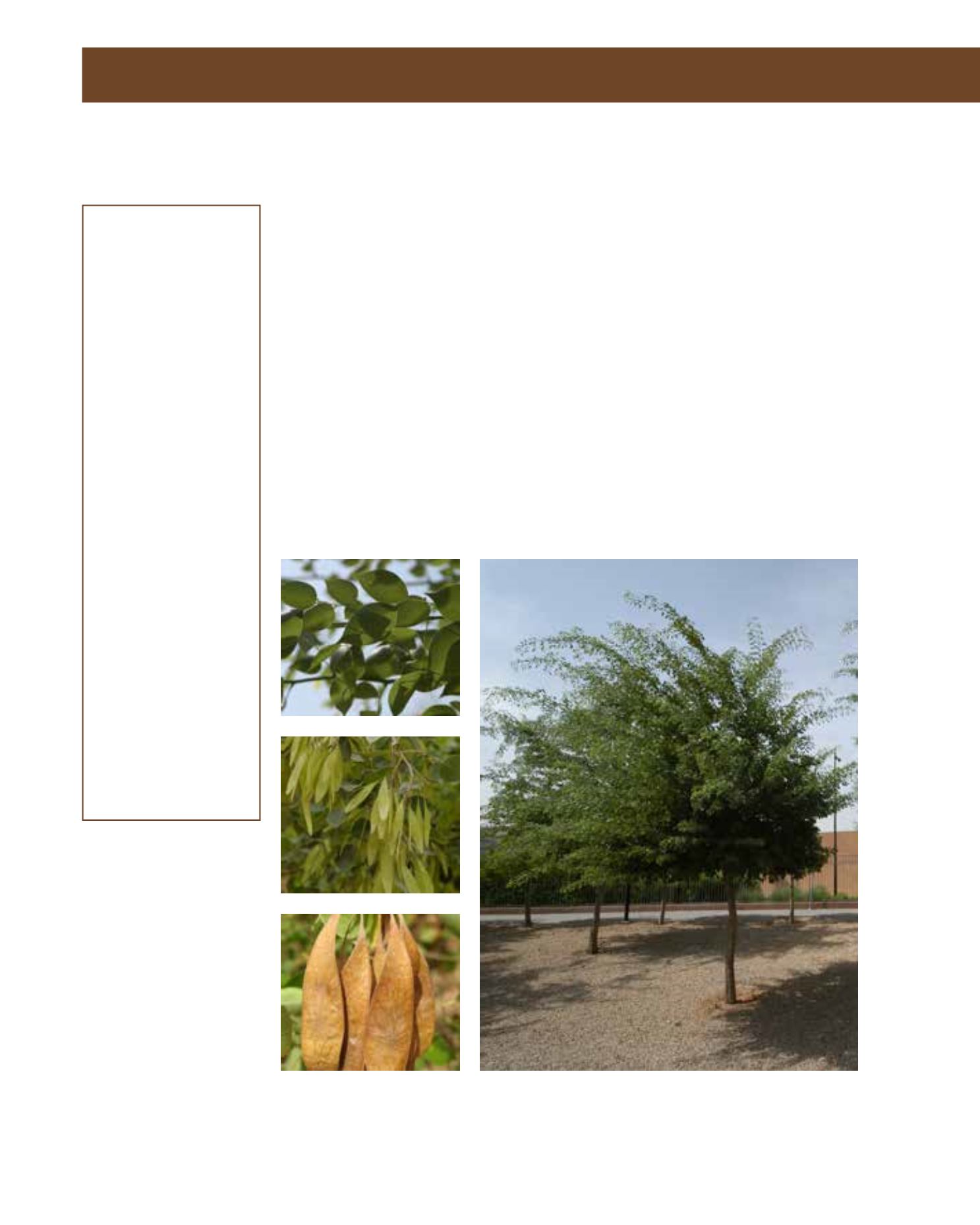

GENERAL
Origin
:
sub-tropical,
tropical
Vigour
:
fairly fast
growing
Humidity
:
very arid, semi-
arid, semi-humid,
very humid
Propagation :
sowing and
pricking out,
cuttings
Maintenance :
moderate
CONDITIONS
Urban climate :
vulnerable
Dessication :
resistant
Stagnant water :
vulnerable
Irrigation
:
low
Salinity/ppm :
moderate (2000
ppm)
Hardiness
:
-3°C
SHAPE
Type
:
tree
Height
:
10 m-25 m
Spread
:
6 m-9 m
Foliage
:
semi-evergreen,
deciduous
FLOWER
Colour
:
pale yellow
Size
:
10 cm
Period
:
March - April
Smell
:
pleasantly
scented, sweet,
flower
FRUIT
Type of fruit :
pod
Fruit size
:
4 cm - 8 cm
Toxicity
:
inedible
The Indian Rosewood grows to about 15 metres high, but may even reach double this size in Af-
ghanistan, Pakistan, India and Bangladesh, where it originates. A beautiful lush, green tree for an
arid landscape, D. sissoo is not often seen or well known in Arriyadh. Its Arabic name is sarsoa.
Huge specimens used to grow near the water tower in Murabba. The crown is broad but not
dense. The grey bark is furrowed lengthwise. The dense roots are dominated by a long tap root.
The deciduous, alternate leaves are pinnate with three or five oval leaflets. Pale yellow, sweetly
scented, small flowers grow on racemes in spring. They develop to pods. In the wild, it is found
along riverbanks, but will tolerate drier conditions with several months of drought. Nodules on
its wide-spreading roots fix atmospheric nitrogen and gradually improve the soil, but care should
be taken not to damage the roots, since suckers may develop. Soils may range from coarse sand to
alluvium, with a moderate salinity. Indian Rosewood does not easily compete, especially in terms
of light. Before sowing, the seeds should be soaked in water. Root suckers may also serve to grow
new plants, but cuttings require additional rooting hormones to thrive. In favourable conditions,
the tree grows fast and is rarely infected by pests. The graceful upward branches and light foliage
make Dalbergia suitable where filtered sunlight is required, for example on lawns. It is often plan-
ted in afforestation schemes and along roads. It is a good windbreak and aids soil stabilisation.
127
Dalbergia sissoo,
Fabaceae
Sissoo Tree,
Indian Rosewood, sarsoa
















